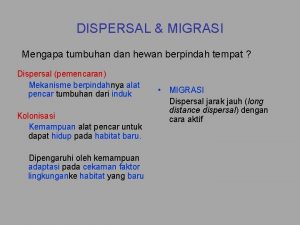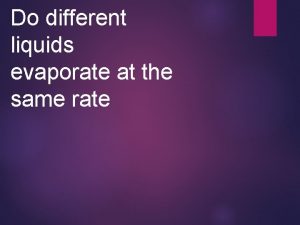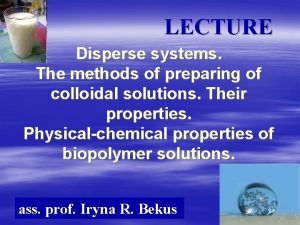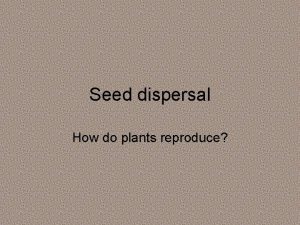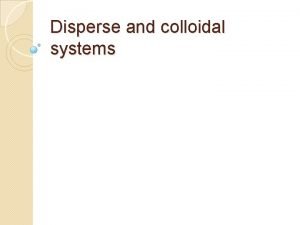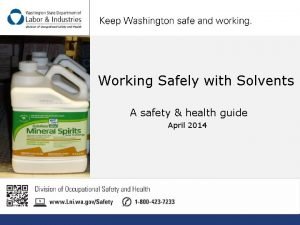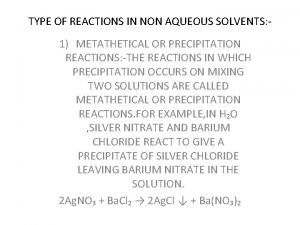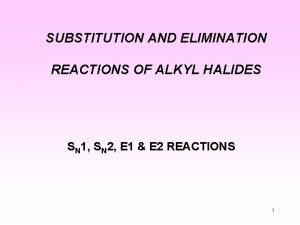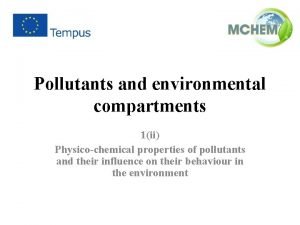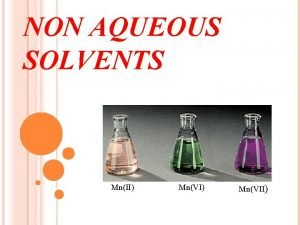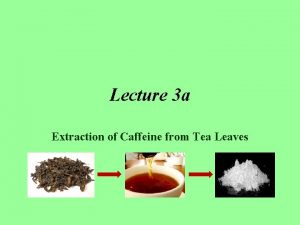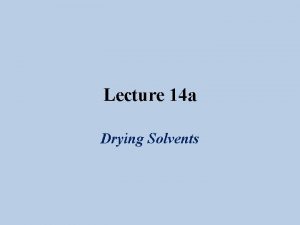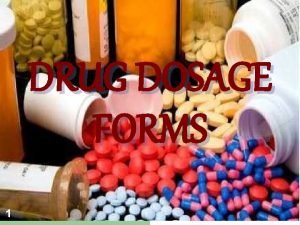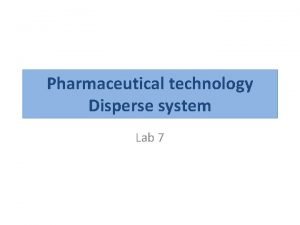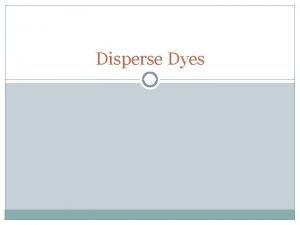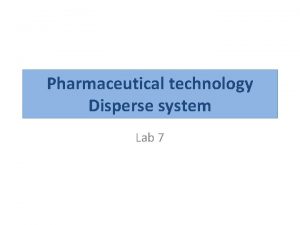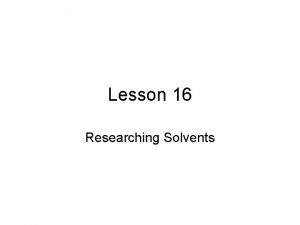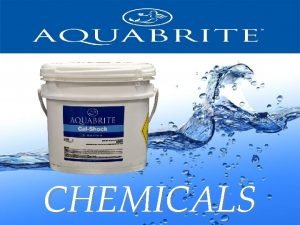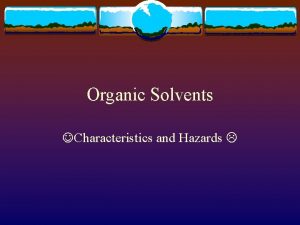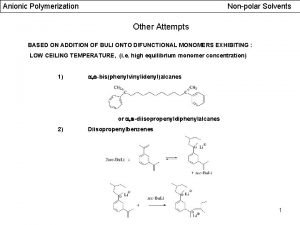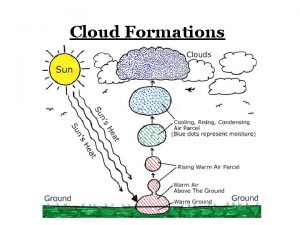SOLVENTS Characteristics Dissolve or disperse other chemicals Evaporate



















- Slides: 19

SOLVENTS

Characteristics Ø Dissolve or disperse other chemicals Ø Evaporate quickly you may inhale solvent vapors Ø Flammable solvents are a fire hazard

Products and Operations Ø Paint systems mixing and spraying Ø Lacquer thinner cleaning spray guns Ø Body filler and hardeners body repair work Ø Degreasers removing adhesives & paint prep Ø Polishing and buffing compounds detailing Ø Gasoline damage estimate/car return

Labels Manufacturer’s name Product name Hazard warning Ø Signal word Ø Safety and health hazards

Safety Data Sheets (SDS) Ø Ingredients Ø Physical and chemical characteristics Ø Fire and explosion data Ø Health hazard data Ø Precautions for safe handling and use Ø Control measures

Routes of Exposure Ø Inhalation – solvent vapors Ø Skin contact – liquid solvents

Short-term Health Effects Vapors ØDizziness ØDrowsiness ØHeadache ØNausea ØEye irritation Contact with liquid: ØDry skin ØEye irritation

If you experience symptoms: ü ü Evaluate your work area Check that ventilation is working Evaluate your work practices Check your PPE

Long-term Health Effects ØDamage to your nervous system ØLiver problems ØSkin rash

Health Effects Severity of health effects depends on: Ø Type & amount of solvent you are exposed to Ø Duration of exposure – daily and over time Ø Where & how you do your work

Minimize your exposure Ø Use in well-ventilated areas Ø Minimize spraying outside the booth Ø Label all containers Ø Find a safer substitute Ø Store properly Ø Use appropriate personal protective equipment (PPE)

Chemical–resistant Gloves Selection factors: Ø specific chemicals you work with Ø type of contact: o o o Immersion Splash Accidental contact Nitrile 8 mils – for most operations Medical-grade latex

PPE – Eye Protection

PPE - Respirators Spraying products other than paint, primer, and clear coats very low solvent concentrations respirators are optional black label “for organic vapors”

Fire prevention Ø Eliminate ignition sources Ø Store properly Ø Ground & bond containers Ø No damaged lights in the paint booth

Flash Point Fluid Flashpoint (o. F) Automatic Trans. Fluid 302 -383 Ø Lowest temperature at which enough fluid can evaporate to Brake Fluid 210 -375 form a combustible concentration of gas Coolant Ethylene Glycol (100%) 232 -260 Propylene Glycol (100%) 210 -230 Ø The lower the flash point the easier the product will burn Diesel Fuel 100 -204 Gasoline (50 -100 octane) -36 to -45 Ø Examples Engine Oil (conventional and synthetic) 300 -495 Methanol (in windshield fluid) 52 -108 R 134 a 140 KPa (5. 5 Psig) 350 Starter Fluid (ethyl ether) -49 http: //depts. washington. edu/vehfire/fuels/flashpoint. html

Spies Hecker Plastic Reducer 8581

Summary ü Most solvents readily evaporate and many are flammable ü May irritate your skin and eyes, and can affect your nervous system and liver ü Use chemical-resistant gloves and goggles ü Store and handle properly – minimize risk of fire Never smoke in the shop! Never use solvents to clean your skin!

Questions?
 Disperse dan barrier disperse adalah
Disperse dan barrier disperse adalah Specialty chemicals vs commodity chemicals
Specialty chemicals vs commodity chemicals Do all liquids evaporate at the same rate
Do all liquids evaporate at the same rate How do things evaporate
How do things evaporate Ukuran simpangan
Ukuran simpangan Disperse system
Disperse system How do acorns disperse their seeds
How do acorns disperse their seeds Liofilik
Liofilik Types of respirator cartridges
Types of respirator cartridges Types of reaction in non aqueous solvents
Types of reaction in non aqueous solvents Solvents for sn2 reactions
Solvents for sn2 reactions Is there any relation between ph and solubility?
Is there any relation between ph and solubility? Co solvents examples
Co solvents examples Contoh pelarut protonik
Contoh pelarut protonik Inorganic non aqueous solvents
Inorganic non aqueous solvents Monophasic dosage form example
Monophasic dosage form example Solubility of caffeine in different solvents
Solubility of caffeine in different solvents Drying solvents
Drying solvents Glycine dissolved in water
Glycine dissolved in water Types of dose
Types of dose
